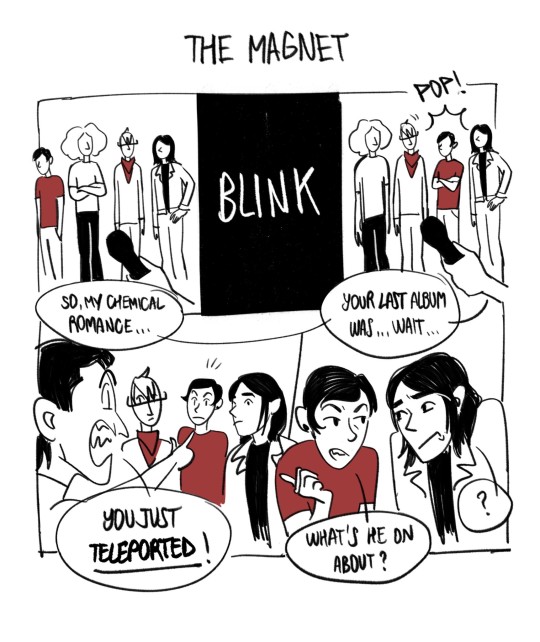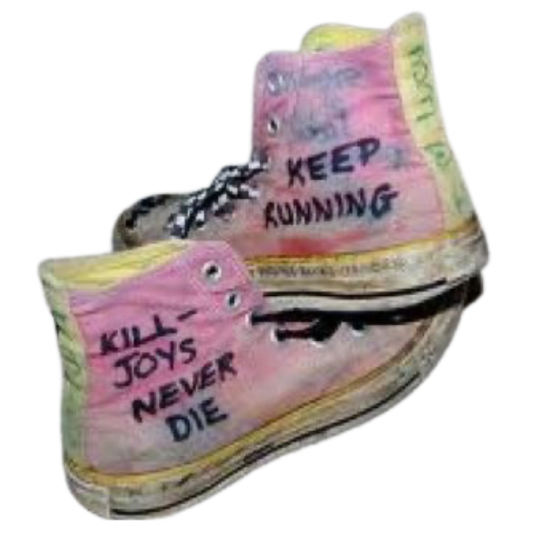#chemical and materials
Explore tagged Tumblr posts
Text






























HUGE music blinkie dump.. found some mayhem ones too which i was surprised about!!
#blinkies ⊹#music#nu metal#metal#heavy metel#black metel#emo#web graphics#web resources#dividers#pixel art#cute pixels#decome#pixels#carrd material#bands#mayhem#hole#my chemical romance#evanescence#the cardigans#panchiko#korn#linkin park#system of a down#blink 182#jack off jill#the cure#blinkies#tally hall
22K notes
·
View notes
Text
#chemicalengineering
#basic concepts#allinfoche#thermodynamics#chemical engineering#study notes#studying#chemical and materials
0 notes
Text
Methanethiol Market: Embracing Growth Opportunities in the Chemical Industry

Market Overview:
The global Methanethiol Market is estimated to be valued at US$8.86 billion in 2023, with an expected compound annual growth rate (CAGR) of 5.5% from 2023 to 2030. Methanethiol, also known as methyl mercaptan, is a colorless gas with a strong odor. It is primarily used as a feedstock in the production of various chemicals and pharmaceuticals, due to its unique properties such as reactivity and solubility.
The need for Methanethiol arises from its use in industries such as chemicals, pharmaceuticals, and agriculture. It is utilized as a building block in the synthesis of numerous chemicals, including insecticides, herbicides, and fungicides. Methanethiol also finds applications in the pharmaceutical industry as a precursor for the synthesis of drugs, mainly antibiotics. The growth of these industries is expected to drive the demand for Methanethiol during the forecast period.
Market Key Trends:
One key trend in the Methanethiol market is the increasing demand for agricultural chemicals. As global population and food consumption continue to rise, the need for effective crop protection solutions becomes critical. Methanethiol-based insecticides and pesticides offer a reliable and efficient way to control pests and protect crops. For example, Methanethiol is used in the production of methamidophos, a widely used insecticide. The growing awareness of sustainable and eco-friendly agricultural practices is further propelling the demand for Methanethiol-based products.
Porter’s Analysis:
Threat of New Entrants: The Methanethiol market possesses a moderate threat of new entrants due to the capital-intensive nature of the industry and the required regulatory approvals for chemical production.
Bargaining Power of Buyers: Buyers in the Methanethiol market hold moderate bargaining power, as multiple suppliers are available in the market. However, the demand for Methanethiol in various industries ensures a competitive landscape, creating negotiation opportunities for buyers.
Bargaining Power of Suppliers: Methanethiol suppliers have a moderate bargaining power, attributed to the availability of alternative feedstocks in the chemical industry. Suppliers need to differentiate their offerings and maintain quality standards to remain competitive.
Threat of New Substitutes: The threat of new substitutes for Methanethiol is low, as its unique properties make it difficult to replace in many chemical processes.
Competitive Rivalry: The Methanethiol market exhibits intense competitive rivalry among key players due to the increasing demand for high-quality products. Companies are investing in research and development initiatives to develop innovative production methods and expand their product portfolios.
Key Takeaways:
In conclusion, the Methanethiol market demand is expected to witness high growth with a CAGR of 5.5% over the forecast period. Factors driving this growth include the increasing demand for agricultural chemicals and the growing need for efficient pharmaceutical synthesis.
Regionally, Asia-Pacific is expected to be the fastest-growing and dominating region in the Methanethiol market. This can be attributed to the rapidly expanding chemical and pharmaceutical industries in countries like China and India, coupled with the availability of low-cost raw materials and labor.
Key players operating in the global Methanethiol market include Chevron Phillips Chemical Company, BASF SE, Evonik Industries AG, Arkema Group, Solvay SA, Taizhou Sunny Chemical Co., Ltd., Prasol Chemicals Pvt. Ltd., TCI Chemicals (Tokyo Chemical Industry Co., Ltd.), Apollo Scientific Ltd., Sasol Ltd., Merck KGaA, Lanxess AG, Zhejiang Weihua Chemical Co., Ltd., and Tokyo Chemical Industry UK Ltd. These companies are focusing on expanding their production capacities, forming strategic partnerships, and investing in research and development activities to stay competitive. Overall, the Methanethiol market presents significant opportunities for growth and innovation within the chemical industry, driven by the demand for sustainable agricultural practices and the continuous development of pharmaceuticals.
#Coherent Market Insights#Methanethiol Market#Methanethiol Market Size#Methanethiol Market Demand#Methanethiol Market Trend#Chemical and Materials
0 notes
Text
Global Nutrient Recycling Market Is Estimated To Witness High Growth Owing To Increasing Focus on Sustainable Agriculture

The global Nutrient Recycling Market is estimated to be valued at US$ 4.98 billion in 2023 and is expected to exhibit a CAGR of 5.9% over the forecast period 2023 to 2030, as highlighted in a new report published by Coherent Market Insights.
A) Market Overview: The Nutrient Recycling Market involves the recovery and reuse of essential nutrients from various waste sources, such as wastewater, agriculture waste, and food waste. This process helps in reducing the environmental impact of nutrient pollution and plays a significant role in achieving sustainable agriculture. The market offers various products and technologies that enable efficient extraction of nutrients and their conversion into valuable fertilizers. The need for nutrient recycling products and technologies arises from the growing global population and the increasing demand for food. Traditional farming practices lead to the depletion of nutrients from the soil, resulting in lower crop yields and reduced soil fertility. Nutrient recycling solutions provide an effective way to replenish nutrients in the soil and enhance agricultural productivity.
B) Market Key Trends: One key trend observed in the Nutrient Recycling Market is the adoption of innovative technologies for nutrient recovery. Companies are investing in research and development activities to develop advanced methods that can efficiently extract nutrients from waste streams and convert them into high-quality fertilizers. For example, Ostara Nutrient Recovery Technologies Inc. has developed a proprietary technology that recovers phosphorus from municipal wastewater and converts it into Crystal Green®, a slow-release fertilizer. This innovative technology not only reduces the environmental impact of nutrient pollution but also provides a sustainable source of phosphorus for agricultural use. Similar advancements are being made by other key players in the market, such as Nutrient Recovery & Upcycling LLC, Cambi AS, AgriProtein Holdings Ltd., and Anuvia Plant Nutrients.
C) PEST Analysis: Political: Governments worldwide are implementing regulations and policies to promote sustainable agriculture practices and reduce nutrient pollution. For instance, the European Union has set limits on the use of chemical fertilizers and encourages the adoption of nutrient recycling technologies. Economic: Increasing concerns about food security and the need for efficient resource utilization are driving the demand for nutrient recycling solutions. These solutions help in reducing fertilizer costs and improving crop yields, thereby providing economic benefits to farmers. Social: There is a growing awareness among consumers about the environmental impact of conventional farming practices. As a result, there is a rising demand for sustainably produced food, which drives the adoption of nutrient recycling technologies in the agriculture industry. Technological: Advancements in technology have led to the development of innovative nutrient recovery and recycling techniques. These technologies enable efficient extraction of nutrients from various waste sources and their conversion into valuable fertilizers, promoting sustainable agriculture practices.
D) Key Takeaways: - The global Nutrient Recycling Market is expected to witness high growth, exhibiting a CAGR of 5.9% over the forecast period, due to increasing focus on sustainable agriculture. - North America is expected to dominate the market during the forecast period, driven by strict environmental regulations and initiatives promoting nutrient recycling in countries like the United States. - Key players operating in the global Nutrient Recycling Market include Ostara Nutrient Recovery Technologies Inc., Nutrient Recovery & Upcycling LLC, Cambi AS, AgriProtein Holdings Ltd., Anuvia Plant Nutrients, and more. These companies are actively engaged in research and development activities to develop advanced nutrient recovery technologies and expand their market presence. Overall, the Nutrient Recycling Market holds significant potential for sustainable agriculture practices and offers promising opportunities for companies operating in this space. The adoption of nutrient recycling solutions can help address the challenges of nutrient pollution, enhance soil fertility, and contribute to the long-term sustainability of the agriculture industry.
#Soil Fertility#Coherent Market Insights#Agrochemicals#Nutrient Recycling Market#Chemical and Materials#Sustainable Agriculture
0 notes
Text










⭒ ⋆ 🍷 red and black blinkies ⋆ฺ࿐♣️ ⁎˚
#♰ ﹒ ⁺ 𝗀𝗁𝗈𝖮𝘀𝘁’𝗌 𝗉𝗈𝗌𝗍𝗌! ◌ 𖤐 ♩#blinkies#my chemical romance#emily the strange#horror#photography#web weaving#webcore#old web#old internet#web graphics#web resources#web design#web finds#carrd#carrd resources#carrd stuff#carrd moodboard#carrd graphics#carrd inspo#carrd decor#animated gif#gif#carrd dividers#carrd material#divider#red moodboard#black moodboard#carrd layouts#art
806 notes
·
View notes
Text

just something i find funny watching my chem interviews lol
#take a shot every time you see frank materialize next to g#my chemical romance#frank iero#gerard way#ray toro#mikey way#mcr#art#digital art#comics
976 notes
·
View notes
Text
look alive, sunshine









#carrd material#transparent png#aesthetic#transparent#random moodboard#messy moodboard#pngs#random png#fashion png#mcr#my chemical romance#danger days
642 notes
·
View notes
Text
On the 35th anniversary of The École Polytechnique massacre never forget the 14 women who were killed for being women in science
The École Polytechnique massacre (French: tuerie de l'École polytechnique), also known as the Montreal massacre, was an antifeminist mass shooting that occurred on December 6, 1989 at the École Polytechnique de Montréal in Montreal, Quebec. Fourteen women were murdered; another ten women and four men were injured.
Perpetrator Marc Lépine, armed with a legally obtained Ruger Mini-14 semi-automatic rifle and hunting knife, entered a mechanical engineering class at the École Polytechnique. He ordered the women to one side of the classroom, and instructed the men to leave. After claiming that he was "fighting feminism", he shot all nine women in the room, killing six. The shooter then moved through corridors, the cafeteria, and another classroom, specifically targeting women, for just under 20 minutes. He killed eight more women before ending his own life. In total, 14 women were killed, and 14 others were injured.
The massacre is now widely regarded as an anti-feminist attack and representative of wider societal violence against women; the anniversary of the massacre is commemorated as the National Day of Remembrance and Action on Violence Against Women. After the attack, Canadians debated various interpretations of the events, their significance, and the shooter's motives. Other interpretations emphasized the shooter's abuse as a child or suggested that the massacre was the isolated act of a madman, unrelated to larger social issues
The incident led to more stringent gun control laws in Canada, and increased action to end violence against women. It also resulted in changes in emergency services protocols to shootings, including immediate, active intervention by police. These changes were later credited with minimizing casualties during incidents in Montreal and elsewhere. The massacre remained the deadliest mass shooting in Canada until the 2020 Nova Scotia attacks over 30 years later.[4]
Contents
Timeline
Sometime after 4 p.m. on December 6, 1989, Marc Lépine arrived at the building housing the École Polytechnique, an engineering school affiliated with the Université de Montréal, armed with a Ruger Mini-14 rifle and a hunting knife.[5] He had purchased the gun less than a month earlier on November 21 in a Checkmate Sports store in Montreal. He had told the clerk that he was going to use it to hunt small game.[6] He had been in and around the École Polytechnique building at least seven times in the weeks leading up to December 6.[5]
The perpetrator first sat in the office of the registrar on the second floor for a while, where he was seen rummaging through a plastic bag. He did not speak to anyone, even when a staff member asked if she could help him.[2] He then left the office and was seen in other parts of the building before entering a second-floor mechanical engineering class of about sixty students at about 5:10 p.m.[7] After approaching the student giving a presentation, he asked everyone to stop everything and ordered the women and men to opposite sides of the classroom. No one moved at first, believing it to be a joke until he fired a shot into the ceiling.[8][9]
Lépine then separated the nine women from the approximately fifty men and ordered the men to leave.[10][9] He asked the women whether they knew why they were there; instead of replying, a student asked who he was. He answered that he was fighting feminism.[9][11] One of the students, Nathalie Provost, protested that they were women studying engineering, not feminists fighting against men or marching to prove that they were better. He responded by opening fire on the students from left to right, killing six—Hélène Colgan, Nathalie Croteau, Barbara Daigneault, Anne-Marie Lemay, Sonia Pelletier, and Annie St-Arneault—and wounding three others, including Provost.[9][11] Before leaving the room, he wrote the word "shit" twice on a student project.[10]
The gunman continued into the second-floor corridor and wounded three students before entering another room where he twice attempted to shoot a female student. When his weapon failed to fire, he entered the emergency staircase where he was seen reloading his gun. He returned to the room he had just left, but the students had locked the door; he failed to unlock it with three shots fired into the door. Moving along the corridor, he shot at others, wounding one, before moving towards the financial services office, where he shot and killed Maryse Laganière through the window of the door she had just locked.[12][11]
The perpetrator next went down to the first-floor cafeteria, in which about 100 people were gathered. He shot nursing student Barbara Maria Klucznick near the kitchens and wounded another student, and the crowd scattered. Entering an unlocked storage area at the end of the cafeteria, the gunman shot and killed Anne-Marie Edward and Geneviève Bergeron, who were hiding there. He told a male and female student to come out from under a table; they complied and were not shot.[13]: 30 [11]
The shooter then walked up an escalator to the third floor where he shot and wounded one female and two male students in the corridor. He entered another classroom and told the men to "get out", shooting and wounding Maryse Leclair, who was standing on the low platform at the front of the classroom, giving a presentation.[13]: 26–27 He fired on students in the front row and then killed Maud Haviernick and Michèle Richard who were trying to escape the room, while other students dived under their desks.[11][13]: 30–31 The killer moved towards some of the female students, wounding three of them and killing Annie Turcotte. He changed the magazine in his weapon and moved to the front of the class, shooting in all directions. At this point, the wounded Leclair asked for help; the gunman unsheathed his hunting knife and stabbed her three times, killing her. He took off his cap, wrapped his coat around his rifle, exclaimed, "Oh shit", and then killed himself with a shot to the head, 20 minutes after having begun his attack.[14][13]: 31–32 About 60 unfired cartridges remained in the boxes he carried with him.[14][13]: 26–27
After briefing reporters outside, Montreal Police director of public relations Pierre Leclair entered the building and found his daughter Maryse's stabbed body.[15][16]
The Quebec and Montreal governments declared three days of mourning.[15] A joint funeral for nine of the women was held at Notre-Dame Basilica on December 11, 1989, and was attended by Governor General Jeanne Sauvé, Prime Minister Brian Mulroney, Quebec premier Robert Bourassa, and Montreal mayor Jean Doré, along with thousands of other mourners.
The Victims
Geneviève Bergeron (born 1968), civil engineering student
Hélène Colgan (born 1966), mechanical engineering student
Nathalie Croteau (born 1966), mechanical engineering student
Barbara Daigneault (born 1967), mechanical engineering student
Anne-Marie Edward (born 1968), chemical engineering student
Maud Haviernick (born 1960), materials engineering student
Maryse Laganière (born 1964), budget clerk in the École Polytechnique's finance department
Maryse Leclair (born 1966), materials engineering student
Anne-Marie Lemay (born 1967), mechanical engineering student
Sonia Pelletier (born 1961), mechanical engineering student
Michèle Richard (born 1968), materials engineering student
Annie St-Arneault (born 1966), mechanical engineering student
Annie Turcotte (born 1969), materials engineering student
Barbara Klucznik-Widajewicz (born 1958), nursing student
#December 6 1989#The École Polytechnique massacre (French: tuerie de l'École polytechnique)#The Montreal massacre#Canada#Quebec#Montreal#the National Day of Remembrance and Action on Violence Against Women#Gun violence#Make violence#Gun control#Men claim to protect women#But the men just obeyed and left their classmates in the hands of a gunman#Geneviève Bergeron (born 1968) civil engineering student#Barbara Daigneault (born 1967) mechanical engineering student#Anne-Marie Edward (born 1968) chemical engineering student#Maryse Laganière (born 1964) budget clerk in the École Polytechnique's finance department#Maryse Leclair (born 1966) materials engineering student#Anne-Marie Lemay (born 1967) mechanical engineering student#Sonia Pelletier (born 1961) mechanical engineering student#Barbara Klucznik-Widajewicz (born 1958) nursing student#Annie Turcotte (born 1969) materials engineering student#Hélène Colgan (born 1966) mechanical engineering student#Michèle Richard (born 1968) materials engineering student#Annie St-Arneault (born 1966) mechanical engineering student#Nathalie Croteau (born 1966) mechanical engineering student#Maud Haviernick (born 1960) materials engineering student
113 notes
·
View notes
Photo




heard you guys like wet gerard way
#mcr#my chemical romance#gerard way#safe and sound#btw gotta say#kyosuke himuro????#quality dilf material in this video#no wonder gerard collabed
1K notes
·
View notes
Text






some mcr patches i impulsively made using cut up bits of painting canvas + pens and alcohol markers
#is painting canvas the best material for patches? probably not but i dont care#i have been frothing over the thought of patches for a bit now and i suddenly realised that canvas could work#originally i only intended to make a patch for each album but then i (a pretty new mcr fan)#found out about pool boy at the vampire mansion and knew i HAD to include it#im sooo happy with how the demolition lovers turned out i had the perfect size/shape scrap of canvas for them#i also really like the better living patch which i (again) didnt know was a thing until recently#i dont actually want to permanently alter my good pair of pants so i plan to just attach these using safety pins when i feel like it lmao#my chemical romance#mcr#patch#patches#justa's art
93 notes
·
View notes
Text
⠀⠀ݖ⠀⠀⠀⠀⠀⠀۫⠀⠀⠀⠀⠀⠀᳞ЖЍЩЈ⠀⠀⠀⠀⠀⠀⠀🍸⃞⠀⠀







#mortiic#moodboard#mood board#web graphics#messy layouts#tumblr layouts#twitter layouts#messy moodboard#visual moodboard#aesthetic moodboard#soft moodboard#colorful moodboard#random moodboard#dollete moodboard#dark moodboard#webcore moodboard#carrd moodboard#locs#carrd material#dividers#messy bios#visual archive#rentry resources#aesthetic#dont repost#my chemical romance#frank iero#mcr#emo#2000s emo
117 notes
·
View notes
Text
To be Fair to Kjarl:

He's never even met Klaus- he has almost no idea how narratively inevitable that man is (this is probably a new way of saying 'hard to kill' even for Klaus!)
#Girl Genius#page react#late on this one it's fine#for the uninitiated:#extruding happens when a material in a fluid or very plastic form is put under pressure to force it through a carefully shaped hole#forming a near uniform theoretically unending prism in the shape of the hole#(amusingly but irrelevantly this can be used to make hollow and curved shapes and is the source of nearly all mass manufacture pasta!)#obviously this will never change the volume of material only it's shape and only very rarely results in a stronger material#on the other hand: drawn materials are forced very slightly through a small hole and otherwise Pulled through from the far side#and in all the cases I can think of it makes a material stronger#and in cases like Taffy does indeed make them bigger (though the extra mass is essentially trapped air)#and also works a chemical change in structure that makes it a lot stronger than it had been
22 notes
·
View notes
Text
Is it so hard for a girl to buy a wafer of CVD diamond the size of a credit card?
46 notes
·
View notes
Note
your posts today are how i found out if i ever went to japan i wouldn't be able to take my medication even with a letter (adderall)
the controlled substances list for japan is hysterical and bizarre and only gets funnier the longer you look at it
-there are only FOUR substances on planet earth that are straight up prohibited like cannot bring them in legally even with the correct paperwork
-they are heroin, methamphetamine, amphetamine (adderall).... and cannabis
-there are 3 laws that collectively deal with substances. the narcotics & psychotropics law, the stimulants & stimulants raw materials law.... and the cannabis law
-the latter 2 were clearly drafted later because the only things defined as "stimulants" are methamphetamine, amphetamine, and lisdexamphetamine. that's not a stimulants law that's an amphetamine law
-this means cocaine and MDMA are classed as narcotics not stimulants
-this means that technically, hypothetically, you could import cocaine easier than adderall
-THC is not defined as a cannabis product
-You can bring in THC as long as it is not derived from cannabis. Unsure how you prove that
-cannabidiol (CBD) is not on there at all
-so you can bring in CBD and THC but not cannabis
-flatpack cannabis. some assembly required.
-the result of this list is that cannabis is more illegal than cocaine, morphine, barbituates, MDMA, LSD, GHB, and fentanyl
-adderall is also more illegal than any of those
-dexamfetamine, which is the same drug as lisdexamfetamine but shorter acting (the body converts lisdexamfetamine into dexamfetamine that's why it's slower release) is not on the list at all
-on a legal technicality i will not be arguing at the border i could bring in dexamfetamine without any paperwork at all because they forgot it existed
-levoamphetamine also is not on the list
-lisdexamfetamine is the only thing labelled as a "stimulants raw material" the two actual stimulants raw materials (ie, component parts of amphetamine) are not on the list. lisdexamfetamine is not a component part of adderall, it's an altered version of a component part.
-technically you can make DIY adderall on the other side of the gate
-it would still be easier to get in with cocaine
#SORRY correction lisdexamfetamine is the only like. complete drug assigned SRM#the others are literal chemicals like. phenylacetone#but the point is neither of the actual complete drugs that are raw materials are on the list at all#and the one that is... isn't technically a raw material
353 notes
·
View notes
Text
Kevin vs. Intro to Quantum
Our first suspicion of Kevin was that he had, somehow, cheated his way up to this course. He just seemed perpetually confused, and strangely antagonistic of the professor. The weirdest example of this was when he asked what an ion was (in a third year class?), and was informed that it referred to any positively or negatively charged particle. It would have been strange enough to ask that in a senior level electrical engineering course, but his reply of "Either? That doesn't sound right" sealed him in as a well known character in the class of 19 people.
The real tipping point in our perception of him was during a lecture where the professor mentioned practical uses for a neutron beam, and Kevin asked if a beam could be made out of some other neutral material. When asked "Like what?", he replied "An atom with all of its electrons removed." When we pointed out that the protons would make that abomination extremely positively charged, he just replied with "So what if we removed those too?" and then was baffled when we informed him that would just be neutrons.
That's high school level chemistry. Not knowing it was so incredibly strange that I felt like something was off, so I waited until after class and asked him if he'd like to grab lunch. He accepted, we chatted, and I finally began to get a sense of his origin story.
See, Kevin wasn't a junior/senior year electrical engineer like the rest of us. Kevin was, in fact, three notable things: A business major, a sophomore, and a hardcore Catholic. All three of those are essential to understanding his scenario.
What had begun all of this was actually a conflict with Kevin and his roommate. Kevin frequently had his fundamental belief in Absolute Good, Absolute Bad, and Absolute Anything pushed back on by his roommate, who was in STEM. Said roommate kept invoking quantum mechanics as his proof against Absolute Knowledge. Kevin had gotten tired of having something that he didn't understand thrown at his beliefs, so he decided to take a quantum course to settle things once and for all.
Despite not having any of the pre-reqs.
He'd actually tried to take quantum for physicists first, but the school's physics department wouldn't let him. It's actually pretty strictly regulated, because it is a mandatory class for physics majors, so they limit who enters in order to make sure all the future physicists can grab a seat. However, because the engineering department's introductory quantum course is not mandatory, there aren't really any built in requirements for the class. It's just assumed that nobody would actually try to take it until their at least third year because doing so would the be the mental equivalent to slamming your nuts in the door. Just, pure suffering for no good reason.
Apparently, the counselors had tried to talk him out of it, but if Kevin was one thing, it was stubborn. He'd actually had to sign some papers basically saying "I was warned that this is incredibly stupid, but I refused to listen" in order to take the class.
He was actually pretty nice, if currently unaware of how bad he'd just fucked up. I paid for the lunch, wished him the best in the class, and reported back to the discord me and about eight other people in the class had been using. We'd all been curious about this guy's story, but now that I had the truth, I could share it with the world.
Feelings were mixed. Some people thought he was going to drop out any minute now. Others thought that he wouldn't, be also that convincing him to drop now, while he still could, was the only ethical thing. Others figured that a policy of non-interference was best. The counselors couldn't dissuade him, and if we tried to do the same, he'd probably just think it was STEM elitism trying to guard its little clubhouse. He'd figure out how hard things were, or he'd fail. Either way, it would help him learn more about the world.
We wound up taking the approach of non-interference. If nothing else, understanding his origins gave us more patience when he asked bizarre questions. He wasn't trying to waste our time, he was just trying to cram three years of pre-reqs into a one semester course. He did get a little bit combative sometimes, and we could tell that he was really wracking his brain to try and find some sort of contradiction or error that he could use to bring the whole thing down, but he never could. He just didn't understand it well enough to have a chance at poking holes in it.
First test came by, and he bombed it. Completely unprepared. He'd taken Calculus I, but he didn't know how to do integrals yet. Worse, he was far past the drop date. I imagine most people in his shoes would've stopped struggling. They'd realize they were fucked and just let themselves fail, at least salvaging their other classes grades in the process. Why waste resources on an unwinnable battle?
Kevin didn't ask questions like that. If he was stupid enough to try it, he was gonna be stupid enough to finish it. God bless him.
He invited me to lunch after the test and said that the class was more fascinating than he'd ever imagined, but he didn't know if he'd be able to pass it. He asked if I could help, and I said "Maybe." I brought the request to the discord, and from the eight people I got three volunteers who admired this dork's tenacity. He was in over his head, miles over his head, but we admired his fighting spirit and were willing to bust our asses to see if we could get this guy to pass the class.
Some of the stuff was just extra homework we gave to the guy. We told him he needed to learn integrals, stat. We sent him some copies of basic software that can be used to teach the basics of linear circuit equations, and he practiced that game like it was HALO. Just, hours sunk into it.
We were very impressed.
He was still scrabbling for air at just the surface level of the class, but he'd gone from abysmal failure to lingering on the boundary between life and death. Other people in the class started to learn about Kevin's origin story, and our little circle of four volunteer tutors grew to six. Every day, he had someone trying to help him either catch up in some way, or finish that week's homework. He'd gone from being seen as a nuisance that wasted class time to the underdog mascot.
He was getting twelve hours of personal tutoring a week, on top of three hours of classes, on top of six hours of office hours, on top of the coursework. I don't think it's an exaggeration to say that this kid was doing 40 hours a week just trying to pass this one single class.
Second test comes around and he gets a 60. He's ecstatic. We're ecstatic. Kid's too young to take out drinking so we just order a pizza and cheer like he just won gold at the Olympics.
After that second test, things hit another tipping point. With so much catch-up under his belt, he was able to focus a lot more on the actual material for the class. A borderline cinematic moment happened when I was trying to get ahead on the homework so that I could put more hours in on my senior project. Nobody else had finished it yet because it wasn't due for another week, nobody else knew how to do it, and when I went to the professor's office hours, Kevin was there. The professor was trying to help me, but I was still struggling. After leaving the office, I got a text from Kevin asking me to hop onto zoom.
Kevin had finished it earlier, because Kevin starts all of his homework the moment its assigned in order to make sure that he can get it done. He'd finished it the day before, and was able to walk me through it.
From student, to teacher. I'm not exaggerating when I say that he probably saved me eight hours on that assignment. I could've kissed him.
Final comes around. As soon as we're done, we six ask Kevin how he did. He's nervous, there's so much new material for him in this class that his retention hasn't been great. Us six are also a little stressed: We're going to pass the class, but the final was hard.
We wait.
We wait.
We wait.
Table with final scores, and overall scores is posted, curve included. From our class of 19 people, 4 withdrew within the deadline, 4 failed, 1 got a C, 8 got B's, and 2 got A's. We can see that the curve for a C is set at 59.2% overall.
We call Kevin. He's crying. End score, 59.2%. Teacher curved the C just to him.
It's a week into winter break so we can't gather the forces around for a party like last time, but we're all losing our shit. Kevin's losing his shit. He can't believe how stupid he was to try this course, he can't believe that six people busted their ass just to make sure he didn't die, and he can't believe that the professor basically just passed him out of effort alone.
He says it's the stupidest thing he's ever done, and while I doubt that, it was outrageously stupid. And yet, I've never been so invested in a fellow student before. I'm prouder of Kevin's C than I am of my own B. I walked on sunshine for weeks after getting the news. I still think about him sometimes. It's been two years, and I still google him, just to see that he's doing well. And he is. Man's a machine. I like to think of how many people this little pinball has bounced off in his life, how many impressions he's made.
I can't be the only person cheering for him. There must be an army of us, proudly watching babybird fly.
#his name is not actually kevin#its kind of an internet perjorative for particularly foolhardy people#the class was called 'intro to electronic materials' but it was basically intro to quantum bcs it focused on semiconductors physics#neutron beams can do chemical analysis of thick objects because coulomb forces prevent electrons or protons from penetrating materials#kevin remained catholic but he did chill out enough to not want to debate every atheist he runs into#getting 20% less insufferable in a year is honestly amazing#Babylon-Lore#Babylon-TopPick
208 notes
·
View notes